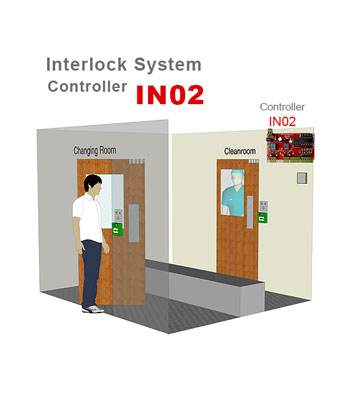16 modules Distribution Box Flush Mount
0,00 €| 16A-250V~50/Hz | – |
| Code : | 22410137 |
| Pieces in box: | 1 |
| Pieces in package: | 16 |
| Package Weight: | 14.4kg |
| Package Dimension: | 488×457×608mm |
90 Elbew With Trreaded Male Off Take
0,00 €
Technical Specifications :
| pack | Nom Dia | Code | Discription |
| 140 | 1/2×20 | 02- 020- 030 | |
| 100 | 3/4×25 | 03 -025- 030 |
A.1 Laminated Safety Glass (Multi-Layer)
0,00 €The laminate glass utilized in sloped, overhead, and other applications presents numerous design and safety challenges. If the glass breaks, the glazing system must protect against the falling glass. Additionally, an understanding of the unique thermal, solar, and ultraviolet characteristics of sloped and overhead glazing is required to avoid occupant discomfort and poor energy efficiency, and reduce potential damage to household furnishings. This Product Application Note is intended to provide an overview of the range of options that exist to incorporate laminated glass in overhead and sloped applications.
A.2 Tempered Glass
0,00 €Fully tempered glass is a safety glass, generally four times stronger than the same thickness of ordinary annealed glass. Taking ordinary glass to a tempered state involves heating the glass in a special furnace to approximately 1260° Fahrenheit, then setting a permanent tension between the glass “core” and surfaces by rapidly cooling the glass in a high-pressure quench.. When fully tempered glass is broken, the release of tension between these surfaces initiates a cascade of much smaller glass fragments than ordinary annealed glass. While a person can still get cut by this safety glass, the objective is to eliminate as much of the dangerously long shards of glass raining down within the broken debris as possible.
A.4 Insulating Glass
0,00 €To reduce heat, gain, or loss through the glass, two or more lines of glass are used to create dead air space that inhibits the transmission of heat and cold between the lines of glass. Insulated glass is typically fabricated using very special sealants and a metal spacer at the perimeter of the glass- creating a hermetically sealed insulated glass (IG) unit. Glass used in IG units can be annealed, heat-strengthened or fully tempered.
A.5 Decorative Glass
0,00 €IGP decorative glass products to satisfy a wide range of applications. Light frit colors and certain pattern designs can cause enhanced brightness when viewed from indoors under certain daylight and background sky conditions, while dark fruit colors will tend to reduce glare. Applications include transparent and translucent glass for interior applications, including glass doors, partitions, handrails, glass ceilings, bathrooms, elevator walls, shower enclosures, court walls for racket sports and sneeze guards for food service.
A.6. Electrical Heating Glass
0,00 €Electrical Heating Glass is a heatable laminated glass that can be applied either on windscreens or backlights or even in the most extreme conditions, allowing a clear and undistorted vision. The main difference regarding ordinary laminated glazing consists of almost invisible heatable microwire filaments embedded in the PVB interlayer film. An electrical current is then passed through these microwires to achieve the mist and ice-free effect.
Achaemenid Garden Curb Model 6*45*50 Concrete
0,00 €Aluminium profiles
0,00 €| Model : | – |
| Company name : | Mahed Aluminum |
| Packaging : | – |
| Standard : | – |
| Production power : | – |
Antibacterial Ceramic
0,00 €Introduction
Ceramics due to having excellent chemical stability, as well as good appearance are widely used in different places such as hospitals and buildings. Ceramics, unfortunately, do not have antibacterial effect inherently, and the microorganisms reproduce easily on their surfaces, especially in wet environments. Regarding this, the need for frequent washing and the use of disinfectants is necessary. However, the use of these materials not only causes respiratory problems but also leads to the loss of cement and mortar between the ceramics. Therefore, the use of a ceramic which has inherent antibacterial properties can be effective in solving these problems. Zin oxide nanoparticles have antibacterial effect which can kill many types of bacteria. These nanoparticles penetrate into the cell walls of bacteria and microorganisms and prevent their growth and reproduction. These nanoparticles can be mixed with ceramic glaze as an additive.
Architectural Float Glass
0,00 €Technical Glass float clear
| Product Name | Thickness | Light Transmittance Specification | Heat Transmittance Specification | Noise Reduction | |||||||
| LT% | LR% | SF% | SC | DET% | Uvtr% | ER% | EA% | UG(W/m^2.k) | Rw(db) | ||
Glass float clear | 3 | 90 | 8 | 88 | 1 | 86 | 67 | 8 | 6 | 5.8 | 29 |
| Glass float clear | 4 | 90 | 8 | 87 | 1 | 86 | 64 | 8 | 8 | 5.7 | 30 |
Glass float clear | 6 | 89 | 8 | 84 | 0.97 | 81 | 56 | 7 | 12 | 5.7 | 31 |
| Glass float clear | 8 | 88 | 8 | 82 | 0.94 | 78 | 51 | 7 | 15 | 5.6 | 32 |
| Glass float clear | 10 | 87 | 8 | 80 | 0.92 | 75 | 47 | 7 | 18 | 5.6 | 34 |
Glass float clear | 12 | 86 | 8 | 78 | 0.9 | 72 | 44 | 7 | 21 | 5.6 | 35 |














